The main function of Adobe Acrobat is creating, viewing, and editing PDF documents. It can import popular document and image formats and save them as PDF. It is also possible to import a scanner's output, a website, or the contents of the Windows clipboard.
Because of the nature of the PDF, however, once a PDF document is created, its natural organization and flow cannot be meaningfully modified. In other words, Adobe Acrobat is able to modify the contents of paragraphs and images, but doing so does not repaginate the whole document to accommodate for a longer or shorter document. Acrobat can crop PDF pages, change their order, manipulate hyperlinks, digitally sign a PDF file, add comments, redact certain parts of the PDF file, and ensure its adherence to such standards as PDF/A.
Adobe Acrobat came to being in 1993 and had to compete with other products and proprietary formats that aimed to create digital documents:
- Common Ground from No Hands Software Inc.
- Envoy from WordPerfect Corporation
- Folio Views from NextPage
- Replica from Farallon Computing
- WorldView from Interleaf
- DjVu from AT&T Laboratories
Adobe has renamed the Acrobat products several times, in addition to merging, splitting and discontinuing them. Initially, the offered products were called Acrobat Reader, Acrobat Exchange and Acrobat Distiller. "Acrobat Exchange" soon became "Acrobat". Over time, "Acrobat Reader" became "Reader". Between versions 3 and 5, Acrobat did not have several editions. In 1999, the Acrobat.com service came to being and introduced several web services whose names started with "Acrobat", but eventually, "Acrobat.com" was downgraded from the name of the family of services, to that of one of those services.
By April 1, 2015, the Acrobat family consisted of:
- Acrobat XI Pro (for Windows and macOS)
- Acrobat XI Standard (for Windows only)
- Reader XI (for Windows, macOS, Android and iOS)
- FormsCentral (web service with desktop client)
- EchoSign (web service)
- Acrobat.com (web service)
- PDF Pack (web service)
- Send (web service)
Unlike most other Adobe products, such as members of Adobe Creative Suite family, the Acrobat products do not have icons that display two letters on a colored rectangle.
In April 2015, Adobe introduced the "Document Cloud" branding (alongside its Creative Cloud) to signify its adoption of the cloud storage and the software as a service model. Apps under this branding received a "DC" suffix. In addition, "Reader" was renamed back to "Acrobat Reader". Following the introduction of Document Cloud, Acrobat.com was discontinued as their features were integrated into the desktop and mobile apps.
The UI had major changes with the introduction of Acrobat DC in 2015, which supports Windows 7 and later, and OS X 10.9 and later. Version numbers are now identified by the last two digits of the year of major release, and the month and year is specified; the previous version was 12, but examples of the DC (Document Cloud) Acrobat product family versions are DC June 2016, version 15.016.20045, released 2 June 2016 and DC Classic January 2016, version 15.006.30119, released 12 January 2016. From DC 2015 the Acrobat family is available in two tracks, the original track, now named Classic, and the Continuous track. Updates for the Classic track are released quarterly, and do not include new features, whereas updates for the Continuous track are issued more frequently, and implemented silently and automatically.
The last pre-DC version, Acrobat XI, was updated to 11.0.23 version (and this was the final release) on November 14, 2017, support for which ended on October 15, 2017.
As of August 2018, the main members of the Acrobat family include:
- Acrobat Pro DC (for Windows and macOS)
- Acrobat Standard DC (for Windows only)
- Acrobat Reader DC (for Windows, macOS, Android, iOS and Windows Phone)
- Fill & Sign (for Android or iOS)
- Sign (for Android or iOS)
- Scan (for Android or iOS)
- Document Cloud (web service with desktop clients)
Adobe Acrobat is available in the following languages: Arabic, Chinese Simplified, Chinese Traditional, Czech, Danish, Dutch, English, Finnish, French, German, Greek, Hebrew, Hungarian, Italian, Japanese, Korean, Norwegian, Polish, Portuguese, Romanian, Russian, Spanish, Swedish, Turkish and Ukrainian. Arabic and Hebrew versions are available from WinSoft International, Adobe Systems' internationalization and localization partner.
Before Adobe Acrobat DC, separate Arabic and Hebrew versions were developed specifically for these languages, which are normally written right-to-left. These versions include special TouchUp properties to manage digits, ligatures option and paragraph direction in right-to-left Middle Eastern scripts such as Arabic, Hebrew, and Persian, as well as standard left-to-right Indian scripts such as Devanagari and Gujarati. The Web Capture feature can convert single web pages or entire web sites into PDF files, while preserving the content's original text encoding. Acrobat can also copy Arabic and Hebrew text to the system clipboard in its original encoding; if the target application is also compatible with the text encoding, then the text will appear in the correct script.
A comprehensive list of security bulletins for most Adobe products and related versions is published on their Security bulletins and advisories page and in other related venues. In particular, the detailed history of security updates for all versions of Adobe Acrobat has been made public.
From Version 3.02 onwards, Acrobat Reader has included support for JavaScript. This functionality allows a PDF document creator to include code which executes when the document is read. Malicious PDF files that attempt to attack security vulnerabilities can be attached to links on web pages or distributed as email attachments. While JavaScript is designed without direct access to the file system to make it "safe", vulnerabilities have been reported for abuses such as distributing malicious code by Acrobat programs. Adobe applications had already become the most popular client-software targets for attackers during the last quarter of 2009. McAfee predicted that Adobe software, especially Reader and Flash, would be the primary target for software attacks in the year 2010.


 Snipping Tool Win 10
2,114
Snipping Tool Win 10
2,114
 Sandboxie 5.45.0
2,065
Sandboxie 5.45.0
2,065
 Adobe Flash Player 32.0.0.465
2,845
Adobe Flash Player 32.0.0.465
2,845
 7 Zip 21.00 Alpha 64bit
2,022
7 Zip 21.00 Alpha 64bit
2,022
 Malwarebytes Anti Malware 4.3.0.206
1,884
Malwarebytes Anti Malware 4.3.0.206
1,884
 WinRAR download for PC win 32 bit, 64 bit
3,142
WinRAR download for PC win 32 bit, 64 bit
3,142
 WinRAR 64bit
2,415
WinRAR 64bit
2,415
 Google Earth Pro 7.3.2.5776 EN
4,446
Google Earth Pro 7.3.2.5776 EN
4,446
 Recuva 1.53.1087 - Recuva file recovery, data recovery free download
42
Recuva 1.53.1087 - Recuva file recovery, data recovery free download
42
 Adobe Flash Player 21.0.0.242
2,616
Adobe Flash Player 21.0.0.242
2,616
 Setup from USB - Free download and software reviews
2,164
Setup from USB - Free download and software reviews
2,164
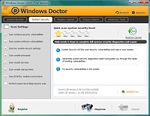 Windows Doctor - Free download and software reviews
2,127
Windows Doctor - Free download and software reviews
2,127
 Xmanager - Free download and software reviews
2,135
Xmanager - Free download and software reviews
2,135
 Sharp World Clock - Free download and software reviews
2,026
Sharp World Clock - Free download and software reviews
2,026
 Live Wallpaper Creator - Free download and software reviews
2,129
Live Wallpaper Creator - Free download and software reviews
2,129
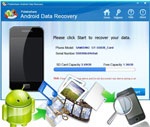 Potatoshare Android Data Recovery - Free download and software reviews
2,355
Potatoshare Android Data Recovery - Free download and software reviews
2,355
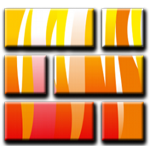 Windows 10 Firewall Control (64-bit) - Free download and software reviews
2,300
Windows 10 Firewall Control (64-bit) - Free download and software reviews
2,300
 PC Optimizer - Free download and software reviews
2,214
PC Optimizer - Free download and software reviews
2,214
 Advanced File Lock - Free download and software reviews
1,978
Advanced File Lock - Free download and software reviews
1,978
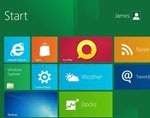 Tweak UI - Free download and software reviews
1,850
Tweak UI - Free download and software reviews
1,850
 Google Chrome Free...
166893
Google Chrome Free...
166893
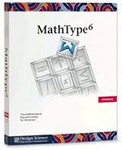 MathType 6.9a -...
79673
MathType 6.9a -...
79673
 Zalo for PC
29613
Zalo for PC
29613
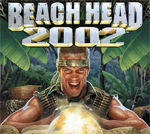 Beach Head 2002 -...
25783
Beach Head 2002 -...
25783
 iBackupBot - Free...
22640
iBackupBot - Free...
22640
 AnonymoX 2.0.2 -...
22224
AnonymoX 2.0.2 -...
22224
 Snipping Tool++...
20923
Snipping Tool++...
20923
 Age of Empires 1.0
17093
Age of Empires 1.0
17093
 Realtek AC97 Audio...
16552
Realtek AC97 Audio...
16552
 Citrio...
14591
Citrio...
14591